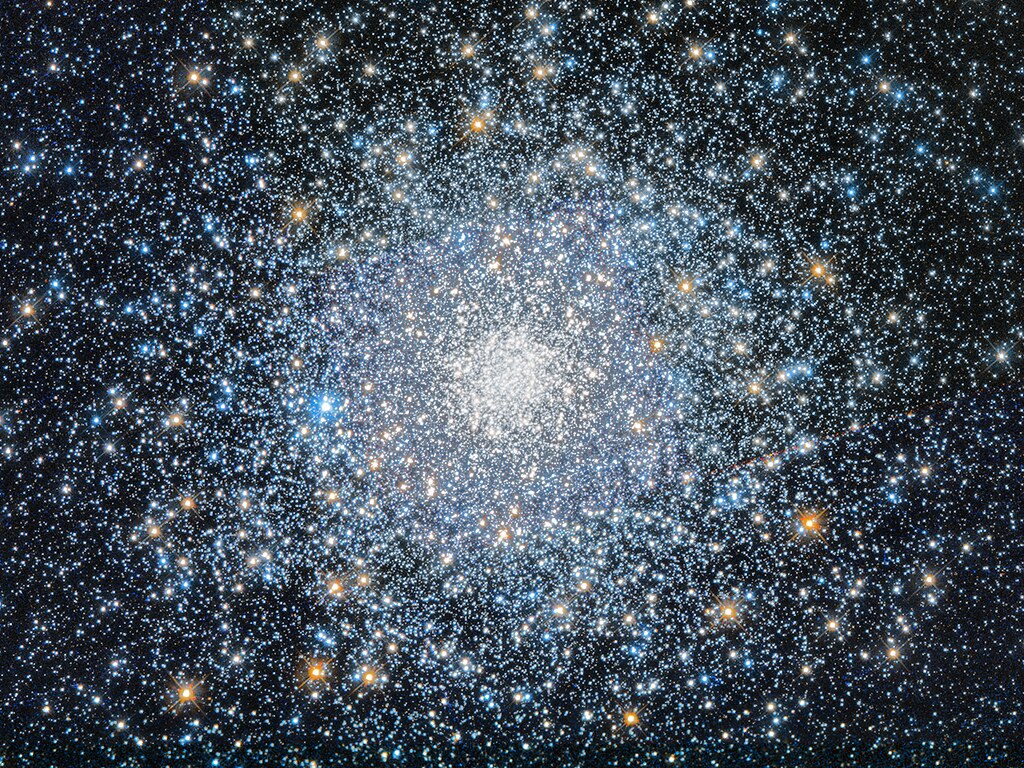Hubble Telescope Captures Stunning Images of a Sparkling and Star-Filled Globular Cluster
In the vast expanse of the universe, there exists a stunning celestial object known as the globular cluster NGC 6652. Located in the constellation Sagittarius, this remarkable cluster is situated approximately 30,000 light years away from our home planet, Earth. However, what makes NGC 6652 even more intriguing is its close proximity to the center of our own galaxy, the Milky Way, at a mere distance of 6,500 light years. Recently, the Hubble Space Telescope’s Advanced Camera for Surveys and Wide Field Camera 3 embarked on two groundbreaking studies involving NGC 6652.
The first study aimed to determine the ages of globular clusters like NGC 6652 and explore their contribution to the gravitational potential of our galaxy. Globular clusters are densely packed groups of stars that formed together from the same interstellar material. By analyzing the ages of these clusters, scientists can unravel the mysteries of galactic evolution and gain insights into the historical processes that shaped our Milky Way. Through the detailed observations made by the Hubble Space Telescope, researchers hope to shed light on the formation and evolution of globular clusters, providing a deeper understanding of our own cosmic neighborhood.
The second study conducted with NGC 6652 focused on investigating the proportions of carbon, nitrogen, and oxygen within these extraordinary clusters. These elements play vital roles in the chemical composition of celestial objects and offer valuable clues about their origins. By precisely measuring the abundance of these elements in NGC 6652, scientists can gain valuable insights into the chemical processes that occurred during its formation. This knowledge can further our understanding of stellar evolution and provide crucial information about the conditions necessary for life to emerge in other parts of the universe.
The captivating image captured by the Hubble Space Telescope showcases the mesmerizing beauty of NGC 6652. The cluster is adorned with countless bright blue stars that twinkle against the backdrop of even brighter foreground stars, marked by striking diffraction spikes. This stunning visual representation allows viewers to witness the grandeur of this celestial marvel and appreciate the intricate details of its stellar population.
The discoveries made through these two studies conducted with NGC 6652 hold great promise for advancing our knowledge of the universe. By unraveling the ages of globular clusters and unraveling the chemical composition of NGC 6652, scientists can gain valuable insights into the formation and evolution of galaxies, including our own Milky Way. Moreover, these findings pave the way for future research endeavors, opening new avenues for exploration and deepening our understanding of the cosmos.
As we continue to explore the vastness of space, the enigmatic globular cluster NGC 6652 stands as a testament to the infinite wonders that await our discovery. Through the efforts of dedicated scientists and the technological marvels like the Hubble Space Telescope, we are able to delve deeper into the realms of the universe, uncovering its secrets one celestial object at a time. NGC 6652 serves as a reminder of our insatiable curiosity and relentless pursuit of knowledge, propelling us ever closer to unlocking the mysteries of our cosmic existence.
